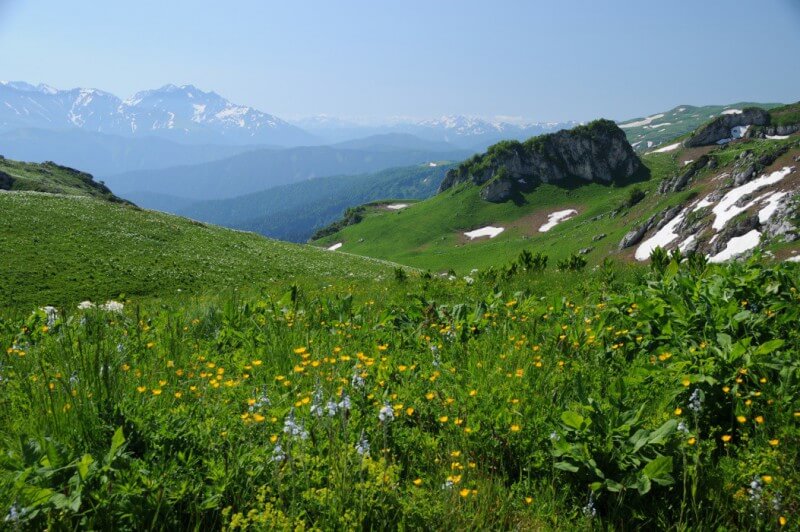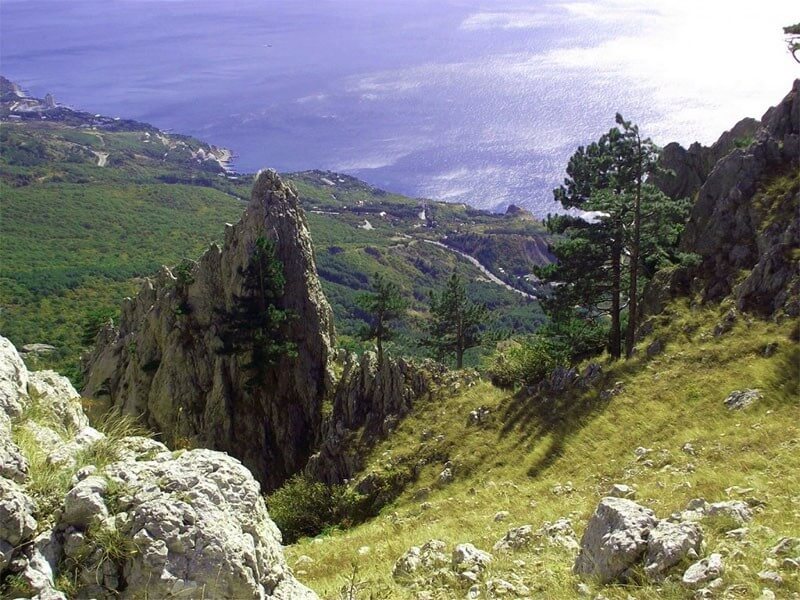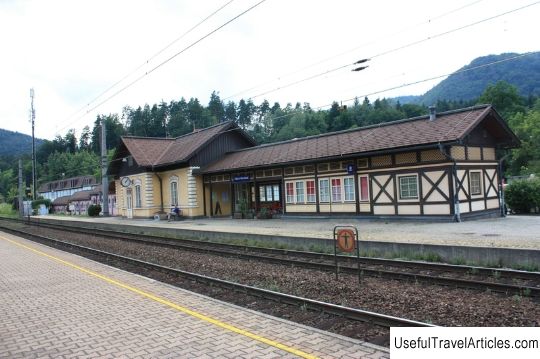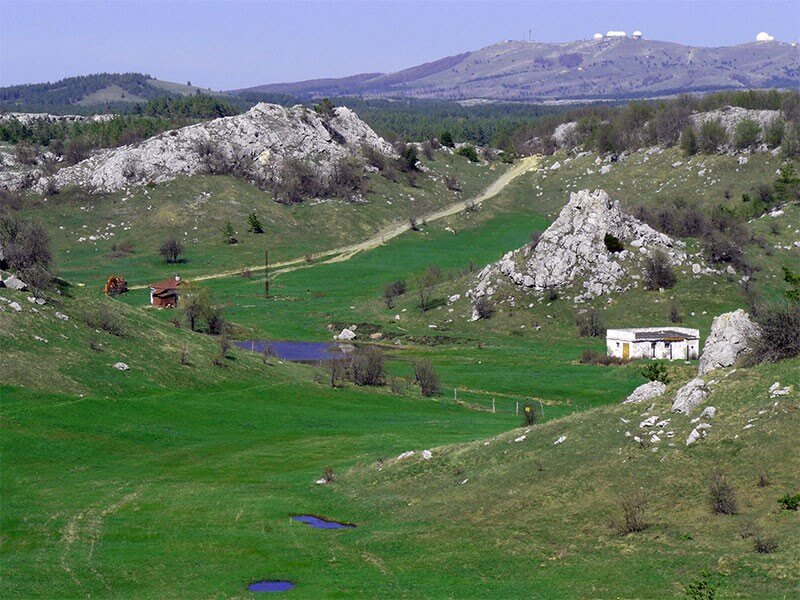Adygea
Rating: 8,4/10 (7855 votes)   Start of the route The tourist route No. 30 became famous in the 1930s, although at that time it was in demand mainly among residents of the southern regions of the Soviet Union. Trails, passes and serpentines near Mount Fisht in Adygea allowed tourists to get acquainted with the harsh landscapes of the North Caucasus, local customs and culture. Now the route has a new period of birth, which attracts more and more guests from all over the world. History of the routeAccording to the official legend about the origin of route 30, the first on the trails between the mountain ranges of Adygea merchants stepped along the Great Silk Road from China to European countries. There is no exact confirmation of this anywhere, but local guides claim this as a real historical fact. The first Soviet tourists set off to conquer the mountain passes in the 1930s. In the same years, the first official route was formed, which was designed for 20 days and was measured by a total walking distance of 93 kilometers. The ascent along the mountain trails was unhurried, so the route itself was not considered the most difficult, although in reality everything was much more difficult. Route 30 received the greatest popularity in the early 1980s. Then tourism in the Soviet regions was literally reborn - new paths appeared, groups numbered dozens of people who came here from all over the vast country. The demand was in use until the 1990s, until the financing of tourist centers in Adygea was abruptly stopped. The route was not officially closed, but there were practically no people wishing to conquer the mountain roads. A group of enthusiasts from Adygea and the neighboring Krasnodar Territory was engaged in the restoration of route No. 30. Later, the group became a full-fledged travel company, which organized the first trip already in 2001. Since then, the route is officially considered one of the revived tourist destinations of the Caucasus. Organization of groupsMost often, tourist groups of route 30 are organized in Krasnodar, despite the fact that all sections of the route are located on the territory of Adygea. An inexpensive bus transfer is organized from Krasnodar to the launch site. For small groups, we organize more comfortable travel in cars or minibuses. The starting point of the route will be Khadzhokh Gorge, or simply - Khadzhokh, a well-known tourist base and resting place. It was from here that the first Soviet hikers set out on a hike along the route. The length of stay in Khadzhokh is determined by the group itself. It will be possible to start on the same day, but it will be possible to get acquainted with local leisure and natural attractions.  Khadzhokh This is where the final formation of the group ends. The route differs in that the groups can be joined by people who did not submit the initial application, but have the desire and the necessary equipment for the hike. In total, the route has 4 mass arrivals - from June to September. There is a age limit - children under 10 years of age are strictly prohibited from passing the route. In a backpack, a tourist must have a change of warm linen, a sweater, two windproof jackets, shower shoes, a hat from the sun and a knitted hat for spending the night. Be sure to carry a headlamp and a spare light source for emergencies. A rain cover will also be needed. Description and durationThe revived route # 30 differs from its Soviet predecessor in both complexity and duration. It now lasts 8 days, up from 20 as before. The length of the walking leg is now 75 kilometers. For beginners, there are options with car crossings, which makes route 30 relatively easy. 1 dayThe start of route 30 will be in Hajokh. After forming groups and meeting a guide, tourists set off to explore the local outskirts and access the main trail. This section of the path is now a must - it allows you to explore the Through Cave and the White River Canyon. These places are recognized as natural heritage sites of local importance. The guide, if the group wishes, will tell the legends of the indigenous peoples about these places. The day ends here, with a kind of preparation for a long journey.  White River Canyon Day 2The second day will be the day of the first training hike. The purpose of the excursion is the Rufabgo Gorge - another natural monument of the route. Here the group examines the picturesque waterfalls of the gorge and the purest mountain streams. There is no clear time schedule for this segment - you can take pictures of interesting places for a couple of hours. The famous primitive man's site is also located here. The place was partly reconstructed, and partly it was left in its original form. After the inspection, return to the camp site and prepare for the second training trip.  Rufabgo Gorge Day 3The goal of the third day is to reach the Meshoko Gorge. This place is known as the cradle of civilization. All over the gorge there are burial mounds, the age of which exceeds tens of thousands of years. Inspection of man-made stone buildings can take almost an entire day. At the end of the day, the group will return to Khadzhokh again for the final packing of their backpacks, sending unnecessary things to the final destination of the route and preparing for departure.  Meshoko Gorge Day 4Early in the morning the group leaves for the Lago plateau Nucky. From here, a long section awaits the group, where you will have to overcome five easy passes, see the Kamennoe Sea ridge, as well as the famous Caucasian snowfields. The purpose of the transition will be the Fisht Shelter, where tourists will have a hot dinner and necessary rest before the dangerous section of the route.  Lago-Naki Plateau Day 5The fifth day is almost entirely devoted to glaciers of Mount Fisht. This is a unique natural area, which is represented by bare rocks, as well as eternal snow and ice. It is extremely dangerous to be here in winter, and in summer glaciers are popular with all lovers of mountain landscapes. Upon returning to the shelter, the group will need to rest before the serious transition awaits the next day.  Mount Fisht Day 6From the Fishta shelter, the group follows the Belorechensky pass. The ascent is not difficult, but the descent may seem tiresome. We'll have to wade through thickets of beech and other trees. The end point will be Babuk-aul shelter.  Belorechensky pass 7 daysFrom Babuk-aul, the group will have to go to the Bzogu shelter. There will be more descents than ascents, so the stage should not cause difficulties. On the way to Bzog, tourists will be greeted by dense thickets of boxwood and several waterfalls.  Crossing through Bzog Day 8The last day of the route is associated with a busy crossing from Bzog to Solokh-aul. Here the group will already be waited by buses that will take tourists to Dagomys, where personal belongings left in Khadzhokh have already been brought. If desired, a transfer is organized from Dagomys to the Sochi Loo microdistrict, where you can stay for a seaside vacation. Interesting facts
|




